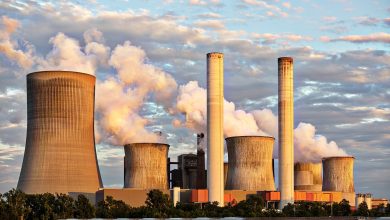One Country is Experiencing Detrimental Impacts from Gas Flaring

A Cocktail of Pollution
The high prevalence of natural gas flaring in southern Iraq is contributing to a toxic cocktail of air pollution. As the global oil and gas industry has started to adopt practices to reduce greenhouse gas emissions and meet environmental standards, it may come as a surprise to find out that many oil and gas companies still engage in natural gas flaring. The practice is especially common in Iraq. According to data conducted by the National Oceanic and Atmospheric Administration’s Earth Observation Group, gas flaring in Iraq is so prevalent that it can be seen from space. A database of satellite imagery that utilizes a Visible Infrared Imaging Radiometer Suite (VIIRS) shows a high density of yellow and orange blotches that appear to consume the southern portion of the country. In addition to filling the sky with light pollution throughout all hours of the night, natural gas flaring has been shown to adversely impact air quality.
In 2011, the World Bank published a research report that highlighted how 140 billion cubic meters of natural gas is burned off annually through flaring. The analysis conveyed that Iran, Iraq, Russia, Nigeria, and the United States were the countries that were found to conduct the most natural gas flaring. Flaring gas refers to the process of purposely igniting excess natural gas from oil wells, refineries, or fossil fuel processing operations. Following the 2011 report from the World Bank, world leaders have started to express more concerns about the energy that is expended from gas flaring. Moreover, about one percent of global greenhouse gas emissions comes as a result of gas flaring, which is down from its peak at two percent of total greenhouse gas emissions in the 1970s (Levy, 2013).

Gas Flaring in Iraq
In Iraq, the peak of natural gas flaring occurred in the 1970s. As the Persian Gulf War erupted between 1992 and 1996, the gas flaring plummeted to historic lows. However, since then, the gas flaring has been on the rise. In 2011, Iraq burned a total of 9.4 billion cubic meters of natural gas through flaring, while the United States, for comparison, flared 7.1 billion cubic meters of natural gas (Levy, 2013). The majority of the flared gas in southern Iraq is linked to the Az Zubair oil fields, which holds one of the world’s largest known reserves of crude oil. The oil fields in Az Zubair were first discovered by the Basrah Petroleum Company in 1949. Today, the region holds roughly 4.5 billion barrels of known oil reserves and produces about 195 thousand barrels of oil per day. In the near future, the region’s fossil fuel producers expect to increase oil production to 1.125 million barrels of oil per day. While this may increase revenue from oil sales, residents in the region are concerned that it will also increase gas flaring.
In a consortium led by Iraq’s state-run Missan Oil Company, Korea Gas Corporation, Italian-based Eni Oil and Gas, and American-owned Occidental Petroleum Corporation, oil production in the Az Zubair oil fields is about to increase significantly. In a region-wide overhaul as part of the Iraq Crude Oil Export Expansion Project (ICOEEP), over 200 new oil wells are being drilled to expand production. Moreover, a series of new oil storage and treatment facilities are being constructed, along with a state-of-the-art refining facility that will be able to process an additional 80,000 barrels of crude oil per day. Lastly, a massive 740-megawatt natural gas power plant is being constructed in the region, which will provide enough electricity and power to fuel the expansion of the Az Zubair oil fields.

Health Impacts
Meanwhile, as the consortium of international oil companies are moving forward with the implementation of the Az Zubair oil field expansion, local residents in the hub of southern Iraq’s oil country are suffering from a variety of ailments linked to the expansion of natural gas flaring. In an interview with the New York Times, a local village leader named Khalid Qassim Faleh said, “Imagine that in the town you come from every family has someone who has cancer” (Rubin & Krauss, 2020). The situation is similar across the Nahran Omar region of southern Iraq. While the oil industry has been booming, the residents have been suffering. The chemicals in the air from the smoky natural gas flares have riddled the region with pollutants that have been shown to worsen hypertension and asthma, while also contributing to a number of different cancers.
Numerous studies have concluded that the toxins and soot emitted from natural gas flares can have an adverse impact on human health, particularly for people that live close to flaring operations. Pollutants released from gas flares include volatile organic compounds, sulfur oxides, and nitrogen oxides. Over the past couple of decades, a number of epidemiological and toxicological medical studies have shown how the impacts of natural gas flaring can be severely detrimental to both the environment and human health. Gas flaring has also been shown to be a significant contributor to smog and acid rain, which are known to aggravate human respiratory problems (Emam, 2015).
Even though natural gas is often called the cleanest fossil fuel, natural gas flaring is starting to tarnish its clean image. Environmental scientists say that gas flaring around the world releases as much carbon dioxide as 90 coal power plants (Collins & Adams-Heard, 2019). However, some forms of gas flaring is more efficient and clean than others. The emissions from particulate matter that are emitted from flaring depends on what has become known as combustion efficiency. Combustion efficiency is a measure of the fossil fuels that are able to be converted to carbon emissions after being ignited. Low combustion efficiency contributes more hydrocarbons and particulate matter into the surrounding atmosphere, which can cause alarming levels of air pollution. One relatively simple way to evaluate the combustion efficiency of a gas flare is to take a look at the color of the smoke. When a gas flaring operation is emitting high levels of black smoke, this can be a signal of low combustion efficiency.

Low-Efficiency Operations
Throughout the Az Zubair oil field region of southern Iraq, many natural gas flaring sites are viewed as low-efficiency operations. The combination of gas flaring with low combustion efficiency and the increased prevalence of gas flaring have been contributing to alarming levels of air pollution. A professor of environmental studies at the University of Basra in southern Iraq has said that the air quality in the region is mixed with a toxic cocktail of pollutants coming from gas flaring, outdated sewage plants, and industrial emissions. Moreover, children that have been born in the region over the past decade have not ever been able to experience silence or a dark night, as the hissing of the flares cast a never-ending glow throughout the region.
Another lesser known issue with the low-efficiency gas flares has been the prevalence of what has become known as oil rain. Since the flares emit a significant amount of unburned hydrocarbons into the atmosphere, these hydrocarbons often fall back onto the landscape during rain events or simply during periods with excess humidity. The oily precipitation destroys agricultural crops, infiltrates groundwater systems, and causes a tremendous number of adverse health outcomes for local residents. Dr. Marilyn Howarth, who is a member of the University of Pennsylvania’s Center of Excellence in Environmental Toxicology, says that toxic mixtures of hydrocarbons and precipitation have contributed to a significant cluster of cancer cases throughout the region. Dr. Howarth says, “The oil itself can contain traces of heavy metals, arsenic and radioactivity, which could be a source of lung cancer” (Rubin & Krauss, 2020).

Wasted Opportunities
In addition to creating a public health emergency in southern Iraq, the high level of natural gas flaring is exceptionally wasteful. According to data conducted by the International Energy Agency, the natural gas that is intentionally burned in Iraq would amount to enough wasted energy to power up to three million homes. Astonishingly, because Iraq does not have the infrastructure needed to capture and make use of the natural gas that is unearthed from oil drilling operations, the country is forced to import natural gas from neighboring countries like Iran and Qatar. This had led to an unusual energy paradox for Iraq. Iraq has some of the largest oil and gas reserves in the world, yet the country frequently experiences large-scale power outages and blackouts due to a lack of natural gas resources to power its electricity-generating power plants. Each year, Iraq spends roughly two billion dollars on natural gas imports from Iran, when the country already has larger gas reserves than Iran directly under its soil.

Potential Solutions
What can be done to resolve Iraq’s significant natural gas flaring challenges? The situation has become detrimental to community health and the economy as a whole. General Electric, which is an American industrial conglomerate, has announced that it will start to work on an international campaign to combat natural gas flaring around the world. In partnership with the World Bank, General Electric is exploring opportunities to develop cost-effective strategies that will help oil and gas producing nations better utilize excess natural gas that is extracted from oil drilling sites. Strategies include direct on-site harvesting to be re-injected into the ground to boost oil production, piping it to markets, liquefying it for international exportation, capturing it to assist with electricity generation for oil operations, and distributing it to neighboring communities. General Electric executives say that nearly half of the $40 billion worth of gas that is flared annually can be captured to generate electricity (Siegel, 2011).
Since unveiling its campaign to combat natural gas flaring, General Electric has partnered with Baker Hughes in a contract to harvest natural gas within two of southern Iraq’s oil fields. Following international pressure to clean up its gas flaring operations, Iraq has announced plans to cease flaring natural gas in its oil fields by the end of 2021. This will be a monumental challenge to fulfill this goal, especially since the country is expected to increased oil production to 6.5 million barrels per day by 2022, which is an increase of 1.5 million barrels over current production levels (Blake, 2018). As more oil fields are brought online, more natural gas will inadvertently bubble up as well. This will require more contracts with international firms to harvest this gas.
Sources
Blake, M. (2018). “Baker Hughes, GE sign contract with Iraq to process natural gas at two fields.” Reuters.
Collins, R., and Adams-Heard, R. (2019). “Flaring, or Why So Much Gas Is Going Up in Flames.” The Washington Post.
Cushing, L., et al. (2020). “Study of natural gas flaring finds high risks to babies.” University of Southern California.
Emam, E. (2015). “Gas Flaring in Industry: An Overview.” Department of Chemical Eng. and Pet. Refinery, Suez University, Egypt.
Lehner, P. (2012). “Fracking’s Dark Side Gets Darker: The Problem of Methane Waste.” Natural Resources Defense Council.
Levy, R. (2013). “Gas Flaring in Iraq.” The National Aeronautics and Space Administration.
Mee-Hyun, C., et al. (2019). “A Missing Component of Arctic Warming: Black Carbon from Gas Flaring.” Journal of Environmental Research.
NRDC. (2020). “Dealing Blow to Big Oil, Court Reinstates Rule that Prevents the Leaking, Flaring of Potent Methane Gas.” Natural Resources Defense Council.
Rubin, A., and Krauss, C. (2020). “Southern Iraq’s Toxic Twilight: Burning Gas and Poisoning the Air.” The New York Times.
Siegel, R. (2011). “Money to Burn? GE is Putting Wasted Flare Gas to Work.” Triple Pundit Media.
U.S. DOE. (2019). “Natural Gas Flaring and Venting: State and Federal Regulatory Overview, Trends, and Impacts.” U.S. Department of Energy: Office of Oil and Natural Gas/Office of Fossil Energy.



